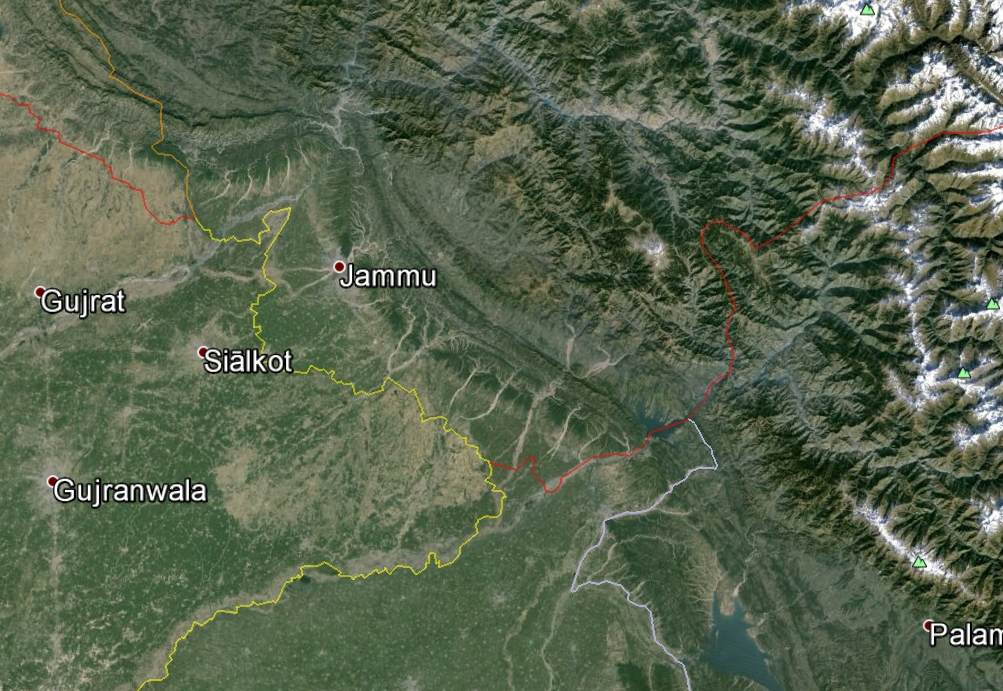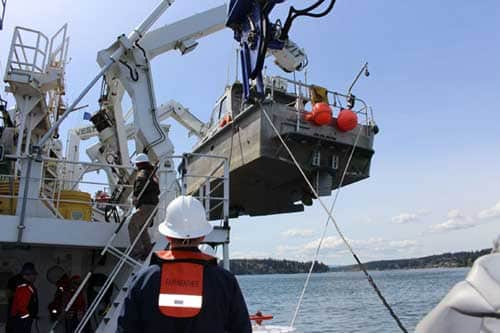CORVALLIS, Ore. – At the beginning of 2010, Oregon State University geologist Robert Yeats told a national reporter that Port au Prince, Haiti, was a “time bomb†for a devastating earthquake because of its crowded, poorly constructed buildings and its proximity to the Enriquillo Fault.
One week later, a magnitude 7 earthquake destroyed Port au Prince, killing hundreds of thousands of people and devastating the economy of Haiti.
The clock is ticking on many other earthquake faults throughout the world, Yeats says, and though he did not “predict” the Haiti earthquake, he can point to other places that could face the same fate. He outlines some of these areas in a new book called “Active Faults of the World,” published by Cambridge University Press.
“We are not yet to the point where we can predict earthquakes,” said Yeats, a professor emeritus in Oregon State’s College of Earth, Ocean, and Atmospheric Sciences. “What we can do is tell you where some of the most dangerous faults lie – and where those coincide with crowded cities, few building codes, and a lack of social services, you have a time bomb.
“Unfortunately, we can’t say if an earthquake will strike today, tomorrow or in a hundred years,” he added. “But in all of these locations it will happen someday – and unless something is done to improve conditions, many thousands of people will die.”
In his book, Yeats notes that the greatest migration in human history is of people moving from rural areas to “megacities” in the developing world. People have flocked to these mega-cities where multi-level housing and businesses are rapidly built, and often poorly constructed and poorly inspected. When many of these locations last had a major earthquake, their population was small and a majority of the people was living in one-story dwellings, limiting the loss of life.
Yeats cites as an example Caracas, Venezuela, which has an earthquake plate-boundary fault north of the city. In 1812, a major quake shook Caracas and other Venezuelan cities and killed an estimated 10,000 people – about 10 percent of the population at that time. Today, the population of Caracas is nearly 3 million, but government decision-makers are “not placing earthquake hazards high on their list of priorities,” Yeats said, despite the presence of knowledgeable local experts.
Another city near the top of Yeats’ list of earthquake dangers is Kabul, Afghanistan, which suffered an enormous earthquake in 1505. Because of recent wars, the buildings in Kabul are in poor shape – either poorly constructed, or damaged from bombs. On a visit to Kabul in 2002, Yeats found many families living in the ruins of these buildings.
|
|
“If Kabul has a repeat of the 1505 earthquake,” Yeats said, “it could kill more people than have died in all of Afghanistan’s wars in the last 40 years because of the influx of refugees living in crowded, substandard conditions.”
Tehran, Iran, is another heavily populated city situated near a major fault line. Located at the base of the Alborz mountain range, Tehran has some 11 million people in its urban boundaries, and Yeats said they are vulnerable because of poorly constructed housing in many parts of the city – a result of corruption in building construction and building inspection industries.
Other over-populated cities near fault lines with poor building codes on Yeats’ list include Istanbul, Turkey, now under an earthquake hazard warning after a quake of magnitude 7.4 in 1999; Nairobi, Kenya, close to a 7.3 quake in the 1920s; and Guantánamo, Cuba.
“Guantánamo is a bit like Haiti,” Yeats pointed out. “They have a fault just offshore, and yet they have no clue they are at risk because Cuba has not had any catastrophic earthquakes in its 500-year history. The military prison operated by the United States would also be at risk, but as far as I know, the Americans are not contributing their expertise to help Guantånamo prepare for its future earthquake.”
There are many places around the world likely to experience a major earthquake in the future, Yeats says, but the “risk” to human lives may not be as high because of less crowding and better building codes. He points to the 2011 super-quake in Japan, which reached a magnitude of 9.0, yet did not cause nearly as much destruction as the tsunami it triggered.
“The Japanese,” Yeats said, “lead the world in taking earthquake risk seriously.”
Yeats was one of the first geologists to point to the Pacific Northwest as being at risk for a major earthquake, because of its proximity to the Cascadia Subduction Zone. Since he and other OSU scientists first raised awareness of that risk in the 1980s, there has been gradual acceptance that an earthquake will strike in the future.
“But will this acceptance lead to concrete action, such as approving a bond issue for seismic upgrades to old school buildings?” Yeats said. “Will it lead to strengthening communities on the West Coast against tsunamis?”
|
|
The OSU professor emeritus hopes his book leads to more awareness of the hundreds of faults around the world – some well-known, and some not. This is the first time someone has attempted to summarize the totality of earthquake faults, and Yeats used his own research and observations, as well as exhaustive literature reviews.
“Knowing about the faults is the first step,” Yeats said, “but preparing for the risk is what really needs to happen. It is kind of interesting that Japan has done a lot of work preparing for an earthquake in their Home Islands, and then one bigger than they expected hits northern Japan, accompanied by a devastating tsunami, whose effects have been felt as far away as Oregon.”
A similar thing happened northeast of Beijing, China, in 1976, when a magnitude 7.8 earthquake struck along a fault line that was not thought to be a major threat, killing more than 200,000 people. And it happened again in 2011 at Christchurch, New Zealand, with an earthquake on a minor fault no one knew about in advance – but still the earthquake produced the greatest losses in New Zealand’s history.
“The lesson there is that you never know which one is going to nail you,” Yeats said, “but it pays to be prepared.”
Yeats’ book, “Active Faults of the World,” is available in print and as an e-book from Cambridge University Press at www.cambridge.org
Source: Oregon State University




